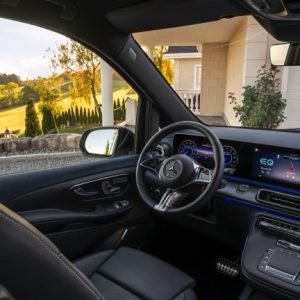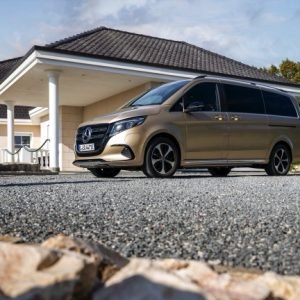0.0/10
Our Tier Classification:
Type of car:
Country of origin:
Make:
Share it:
Car manufacturers often offer different variations of the same model, allowing you to customize your vehicle to suit your preferences. Our goal is to showcase the range of performance options available, from the most basic to the most advanced. For precise pricing and specifications of each variant, please visit the official manufacturer’s website through the ‘prices section’ links by country.
Performance
Consumption
Acceleration (0-100km/h / 60mph)
Top Speed
Power
Power (kW)
Battery capacity
Dimensions
Doors
Max. seats
Lenght
Height
Width
Width with mirrors
Weight
Trunk Volume
Frunk Volume
We aim to provide both the manufacturer’s estimated range, as listed on their official websites, and a realistic range based on actual driving conditions. This includes the impact of weather, as well as the use of heating, air conditioning, and other factors that could affect performance. This data is supported by data from official manufacturer websites, user feedback, and EV-Database.org.
Estimated Range by manufacture
Minimal Estimated range
Maximal Estimated range
Disclaimer: The standard conditions for our range estimates assume an ambient temperature of 23 degrees Celsius (73.4 Fahrenheit) without the use of air conditioning. Please note that these ideal conditions are not always practical, and the real-world range may be lower.
Approximate actual distance given by feedback
Real range - City ❄️
Real range - Highway ❄️
Real range - City ☀️
Real range - Highway ☀️
Disclaimer: We also consider ‘worst-case’ scenarios. For ‘Cold’ conditions, we assume -10 degrees Celsius (14 Fahrenheit) with heating on, and for ‘Hot’ conditions, we maintain 23 degrees Celsius (73.4 Fahrenheit). We include the effects of different driving environments, such as city and highway, with speed limits adhered to as per US and European standards (excluding unlimited German autobahns). This data is corroborated by EV-Database.org and feedback from real users.
Charging times
Charging time 0-100% - Home (2.3 kW)
Charging time 0-100% -Wallbox (11 kW)
Charging time 10-80% Fast charging (175kW)
There are several methods of charging electric vehicles, which we categorize into three types: standard home plug, home wallbox, and highway superchargers (CCS).
Home plug: Generally offers a charging capacity ranging from 1.5 to 3.7 kWh. We use 2.3 kWh as an average reference, but actual rates may vary depending on the vehicle model.
Wallbox: Although wallboxes can support up to 22 kWh, government regulations in some countries may require special permission for higher capacities. Therefore, we display the maximum standard output of 11 kWh that can be used without additional permissions.
Supercharger CCS: Depending on the service provider and car model, these chargers typically offer around 175 kWh, but this can vary based on weather conditions and car specifications. Some cars have a maximum kWh limit to prevent malfunctions, so if a charger offers 175 kWh or 150 kWh and your car only shows a maximum of 100 kWh, don’t be alarmed.
All this data is coming from an average calculation between users’ feedback and EV-Database.org
Step aside, boring family wagons and drab commercial vans, because the Mercedes Benz EQV is here to electrify your errands and revamp road trips with a dash of luxe and a whole lot of volts. Released in 2020, this all-electric van from Mercedes isn’t just a vehicle—it’s a VIP lounge on wheels that just happens to plug in instead of gas up. Whether you’re carting kids to soccer practice or shuttling clients between sites, the EQV combines the practicality of a van with the panache of a Mercedes, all while keeping it green. This isn’t just any electric vehicle (EV); it’s an EV with a three-pointed star, which means you’re saving the planet in style.
Mercedes-Benz has always been at the forefront of automotive innovation, and the EQV is a testament to this legacy, being one of the first in the luxury segment to offer a fully electric van. It’s designed for those who need the versatility of a large vehicle but want to keep their carbon footprint small and their ride quality high. With the EQV, Mercedes proves that you don’t have to compromise on comfort or performance—even in an EV designed for more practical purposes.
Relevant Specifications of Mercedes Benz EQV
Range
The EQV boasts an impressive electric range, which is no small feat for a vehicle of its size. With a 100 kWh battery, it offers up to 418 kilometers (260 miles) on a full charge. When it comes to family or commercial vans, range anxiety is a real concern, but the EQV handles this brilliantly. Compared to rivals like the Volkswagen ID. Buzz, which also plays in the electric van space, the EQV holds its own, offering sufficient range for daily duties and long enough legs for weekend getaways.
Battery Life & Charging Time
Let’s talk about uptime because nobody likes to wait. The EQV’s battery not only supports your eco-friendly escapades but also charges up without a fuss. With fast-charging capability, you can juice up the battery from 10% to 80% in just 45 minutes using a DC fast charger. If you’re charging at home with an AC connection, it’ll take about 10 hours to reach full capacity. This puts the EQV at a competitive advantage, ensuring that both personal and professional users can rely on the vehicle being ready when they are.
Performance
If you think electric means sluggish, think again. The EQV delivers a zippy 150 kW (201 horsepower) which is more than enough to get your cargo or crew moving. It smoothly accelerates from 0 to 100 km/h (0-62 mph) in 12 seconds—a respectable number considering its size and primary function. It may not be the king of the drag strip, but within city limits, it’s royalty, ensuring a ride that’s as smooth as it is silent.
Cost of Ownership
While the sticker price for the EQV might make you blink twice, the long-term savings will have you nodding in approval. Electric vehicles are cheaper to maintain than their gasoline-powered cousins, and the EQV is no exception. You’ll save on everything from fuel costs to routine maintenance. That said, it’s still a Mercedes, so be prepared for a premium experience when it does need a dealer visit—both in service and cost.
Technology and Interior Comfort
Inside, the EQV is all about high-tech and high comfort. The van is equipped with Mercedes’ MBUX infotainment system, which includes navigation optimized for electric driving, keeping you on the most efficient route to your destination. The cabin is spacious, with adjustable seating configurations and quality finishes that make every seat the best seat in the house. For a van, the EQV feels more like a luxury sedan inside, setting a benchmark for what a commercial EV can feel like.
Why Should I Buy Mercedes Benz EQV
- Spacious and luxurious interior that doesn’t skimp on comfort.
- Impressive electric range for fewer stops and more going.
- Quick charging capabilities to keep you on the move.
- Lower maintenance and operational costs than gas-powered vans.
Why Should I NOT Buy Mercedes Benz EQV
- Premium price point might not fit all budgets.
- Size and maneuverability could be challenging in tight urban areas.
- Overly sophisticated for those who prefer a more utilitarian approach.
Conclusion
The Mercedes Benz EQV is more than just an electric van—it’s a lifestyle choice for those who prioritize sustainability without sacrificing luxury. With its combination of range, comfort, and cutting-edge technology, the EQV is ideally suited for families and businesses looking to make a statement about their commitment to the future. Whether it’s the right vehicle for you depends on your specific needs and budget, but for those in the market for an eco-friendly van that exudes luxury, the EQV is a stellar choice.











